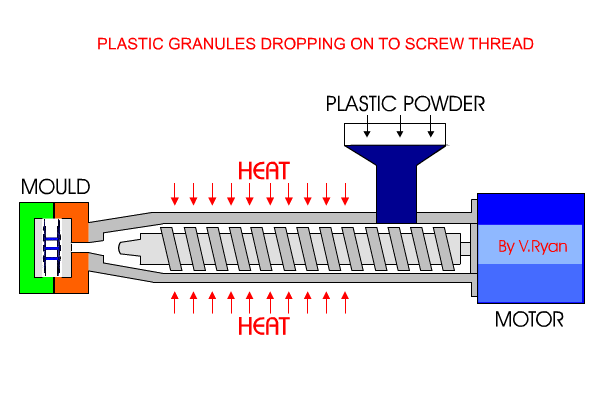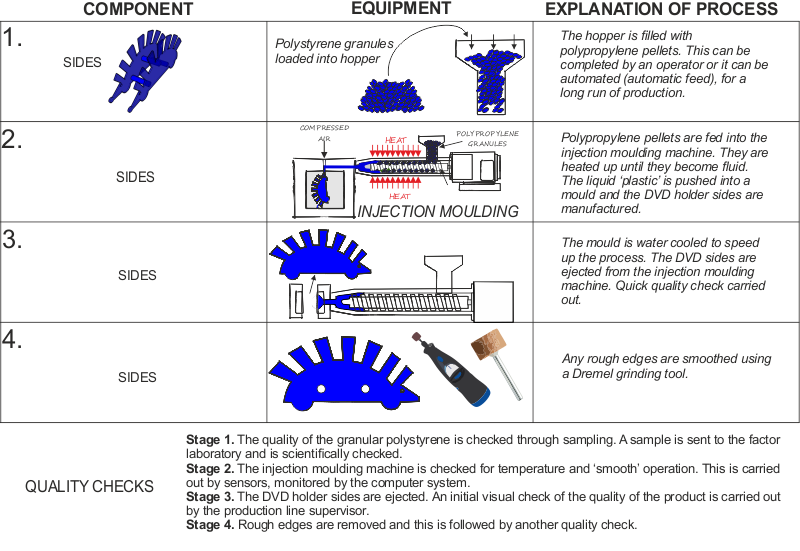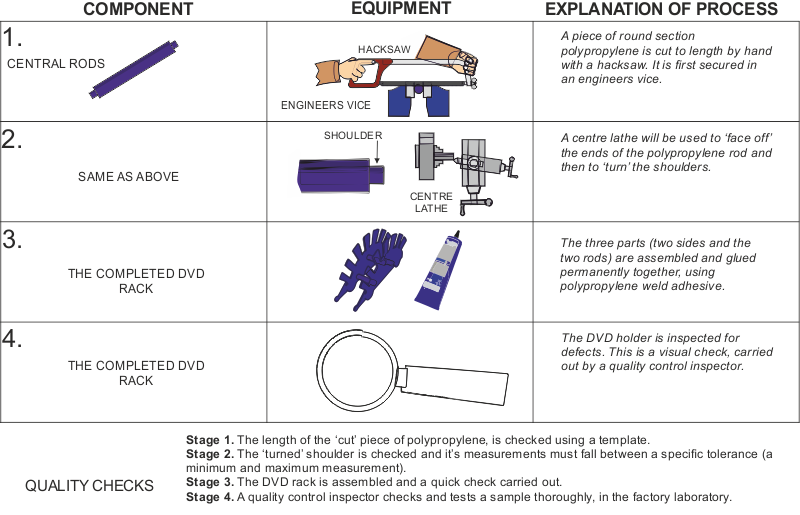The design process can be a long and detail concern. However, it leads inevitably to a manufactured product, called a prototype. This is usually completed in a workshop, often with components being handmade and through the use of typical workshop equipment and machinery. In addition to a completed prototype, designers must consider how their product will be manufactured in a factory, so that it can be massed produced, ready for distribution and sale to customers.
The machinery and equipment required for ‘industrial production’, is often different to that of a typical workshop. For instance, a prototype DVD rack may be made largely by hand or with the aid of a laser cutter, in a workshop. When this production is scaled up for mass manufacture, it is often found that using the same equipment and machinery is not economic. Other equipment and machinery is selected for mass production, this may involve alternative manufacturing processes such as injection moulding.
Below is an example of a prototype DVD holder. It has been made in a workshop and is manufactured from MDF and dowel rod.
It has been manufactured using hand tools and a CNC router. To manufacture hundreds or even thousands of this product, using the same machinery and processes, would mean that it is far too expensive. It would not be within a reasonable price range to attract customers.
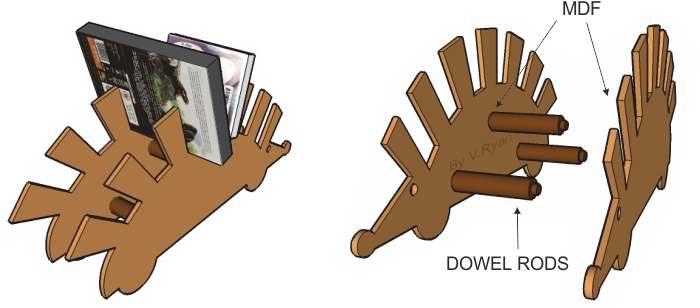
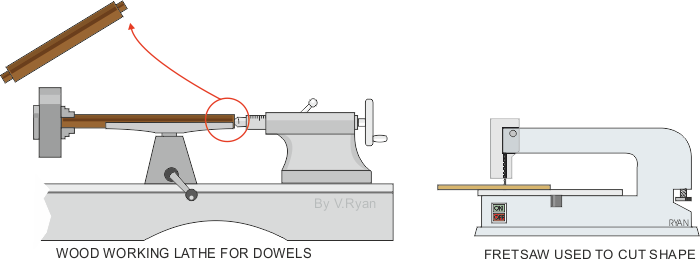

This shows the industrial version of the DVD rack. The materials have been changed from ‘woods’ to ‘plastics’. In this case polystyrene has been selected as it is one of the best materials for injection moulding.
Polystyrene is supplied in a range of colours, satisfying customer choice. Further to this, it is a modern lightweight material, popular with this type of mass manufactured product.
Although the moulds are extremely expensive to make, The injection moulding process is economic, when thousands of a product are to be manufactured.
The moulding process is shown below. Polystyrene granules are poured into a hopper at the top of the machine. They fall onto a revolving screw, that moves them through a heater. The heater and the pressure from the screw, ‘transforms’ the granules into a fluid. The molten polystyrene is injected into the mould and after cooling, takes on the shape of the mould.
Thousands of DVD racks can be made in this way. It involves very little hand craft work and it is quick and accurate every time. The more DVD racks that are made, the cheaper the process becomes.
